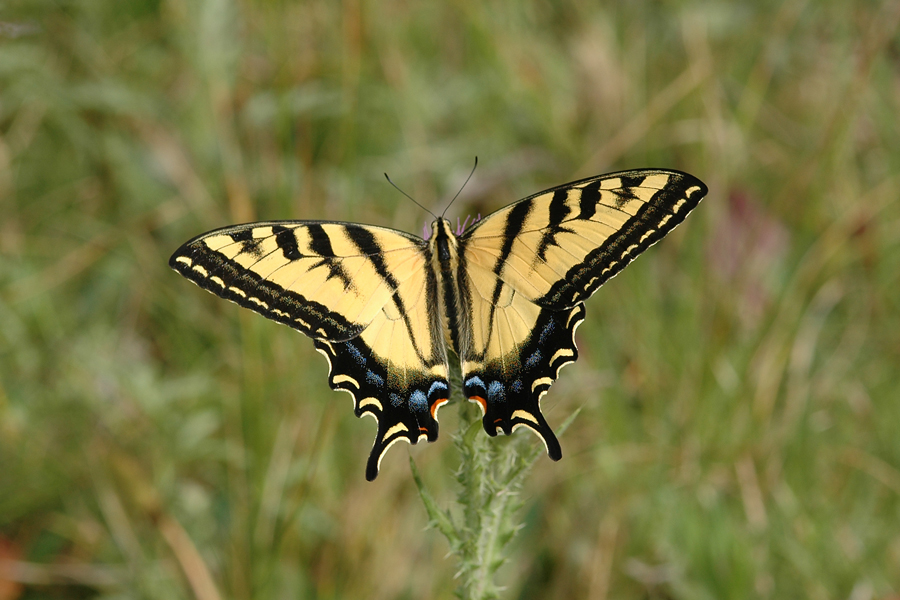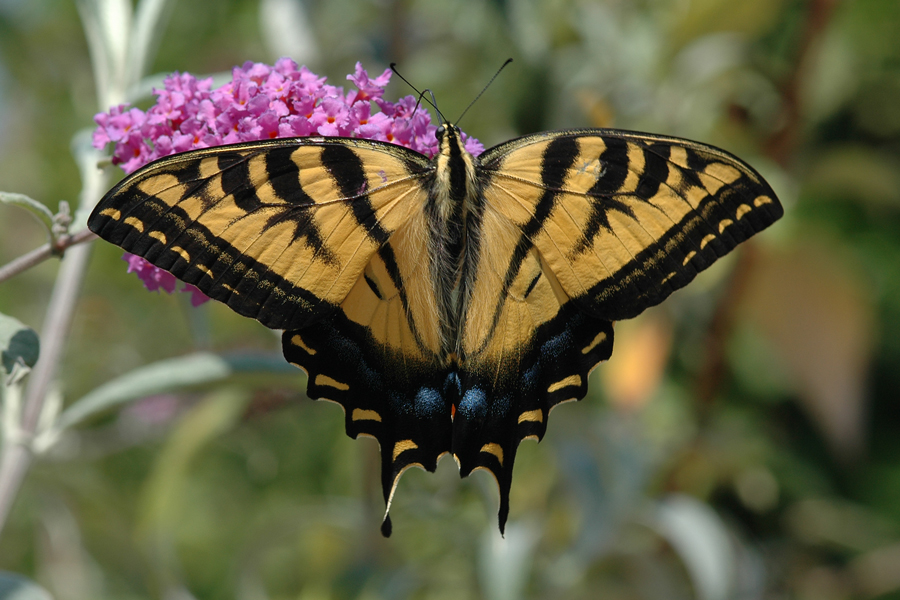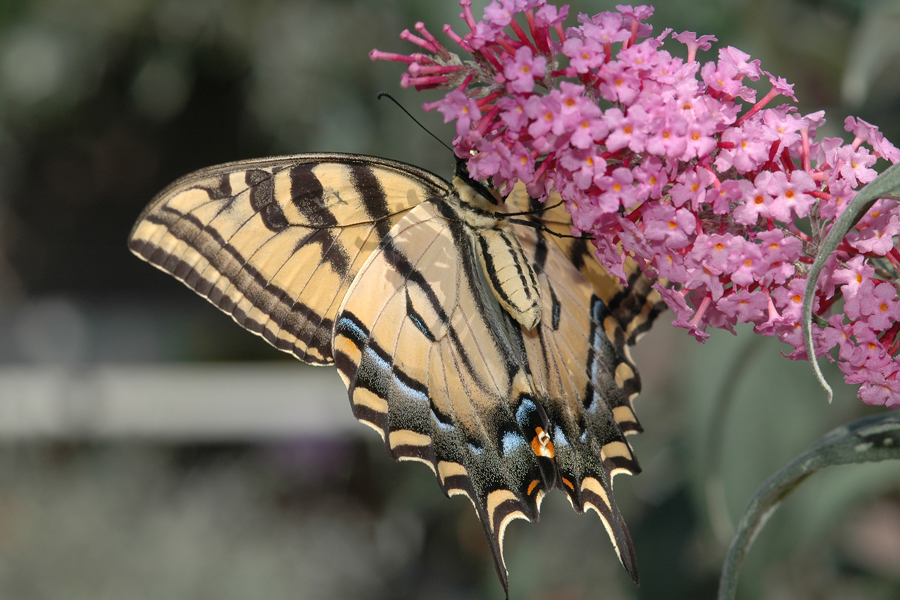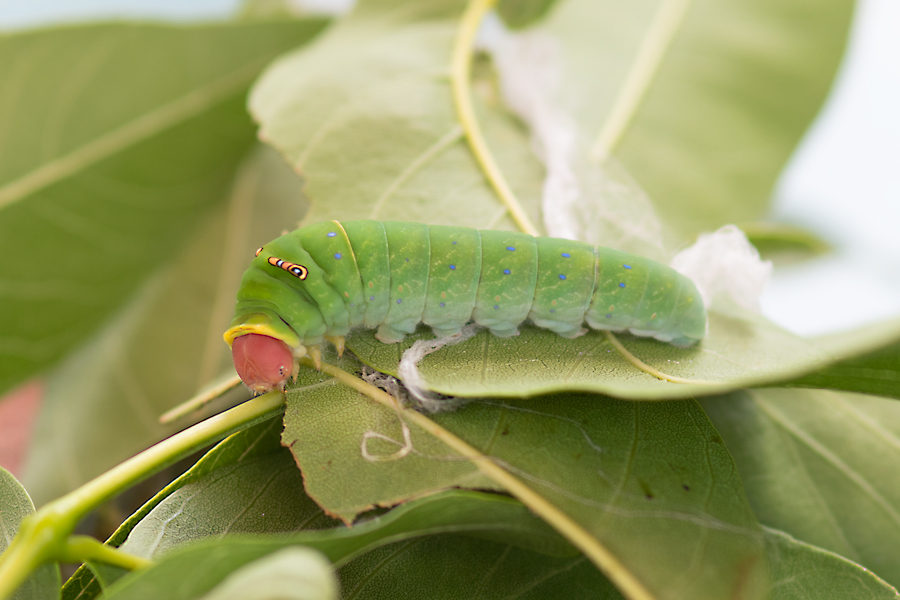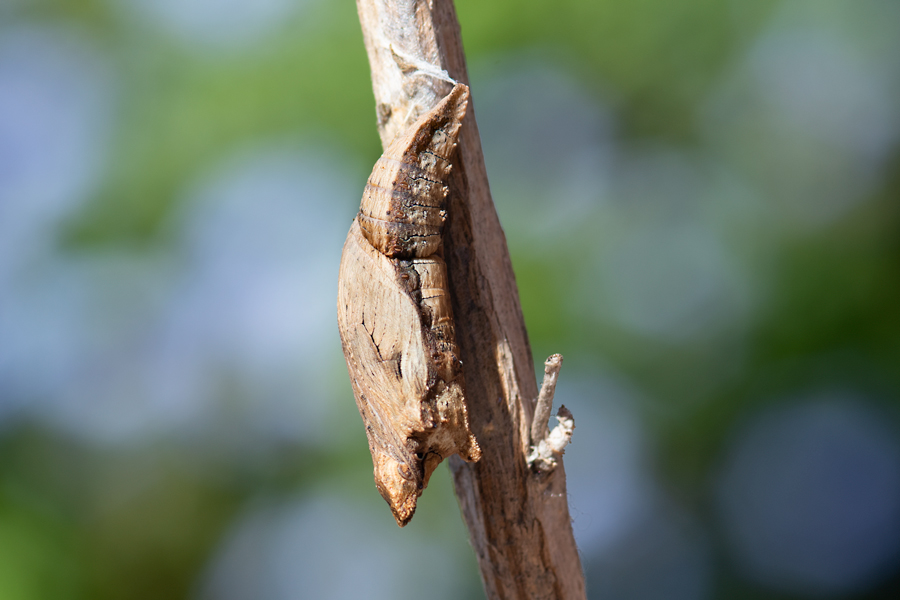Papilio rutulus
Western Tiger Swallowtail
This yellow and black tiger swallowtail ranges from the Rocky Mountains to the Pacific coast, and is at home in many habitats, including suburban gardens and parks. For those of us who grew up in the suburbs, this was the big yellow swallowtail that frequented our neighborhoods. One reason it is at home in so many places is that it can use several popular trees as the larval food plant: ash trees and sycamores seem to be preferred, but willows, cottonwoods, poplar, and alders are also known hosts. Outside the cities, these trees grow where there is water, and that is where rutulus may be found. Hilltopping is not in their repertoire, though it certainly is for the closely-related pale swallowtail.
The first two instars of rutulus larvae rememble bird poop; the third is a bit of a transition to an entirely different appearance. In the fourth and fifth instars, the larva is smooth and green with false eyes, something predators may confuse with a snake or, at least, something to be left alone.
As a common California butterfly, it isn't surprising that the Frenchman Pierre Lorquin found this species during his collecting forays in the mid-1800s. He sent it to Boisduval in Paris, who gave a lecture on the exotic butterflies arriving from far-flung California, which he named in a soon-to-be-published paper. As related below, Lucas' description based on the lecture went to print first, and his name is now attached to our swallowtail. The types of this swallowtail (and of P. eurymedon, P. zelicaon, and three other "Lucas" butterflies from California) are now in Paris' Museum Nationale de Histoire Naturelle.
